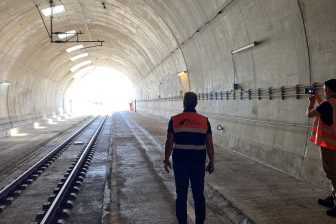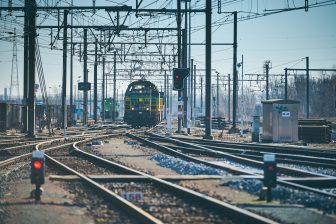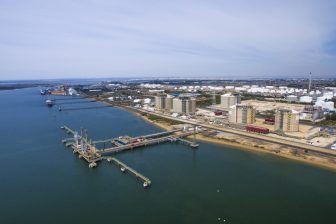France to test self-driving freight train in 2019
France plans to experiment with remote-controlled freight trains in 2019, as it pushes forward technological advances to facilitate the use of semi-autonomous trains across the national rail network.
It is all part of a long-term programme being led by the French national rail infrastructure manager, SNCF Réseau, and the wider SNCF group. In developing trains for the future, SNCF says it is guided by two objectives: continuing to expand services in the most densely populated areas, and increase operational flexibility while ensuring total safety.
Innovative solutions
The SNCF Group is known internationally for the high-speed and revolutionary TGV trains, and now it is the introduction of self-driving trains which represents a similarly important technological leap. To meet this challenge, SNCF and its partners are looking for innovative solutions to automate certain observation and train environment management functions, as well as speed control and traffic management.
In one example, a partnership with the internationally renowned railways systems provider Alstom, and the Institute for Technological Research SystemX (IRT), SNCF is developing a perception system that relies on a combination of sensors, cameras and radars to detect obstacles and signalling. The first experiments will start in 2019 with a remote-controlled freight train. In 2021, the movements of freight trains and TERs (regional services) will be partially automated on their way to and from maintenance centres.
‘Human presence’
Mathieu Chabanel, Deputy Director General of SNCF Réseau, said: “Completely automated driving cannot exist for the railway. Trains do not run on closed tracks, unlike automated subway trains. The technology that needs to be developed is thus far more complex. A human presence is required to adjust driving behaviour in the event of incursion on the track, or difficult weather conditions for example.”
Guillaume Pepy, Chairman of SNCF Executive Board, said: “The first challenge is to increase line capacity – not to dispense with drivers. Automation will be used to optimise train running speeds. Consider the motorway: when everyone is travelling at the perfect speed, the flow of traffic is much smoother. Self-driving trains thus guarantee greater line capacity, allowing us to put our existing infrastructure to better use and eliminating the need for costly investment.”
Mobility users
Pascal Cléré, Senior Vice President of Alstom’s Digital Mobility division and President of System X, said: “Alstom is pursuing its digital transformation by gradually changing its portfolio of traditional solutions, but also by developing completely new solutions to address the emerging needs of operators and mobility users. These solutions are developed within a dedicated ecosystem, fuelled by a process of open innovation. Alstom has decided to associate itself with the development of the IRTs, in particular that of SystemX, which is closely related to its activity. The IRT provides Alstom with scientific support for the execution of its projects, and in particular here, to imagine the driving of the future, which will one day go as far as to acquire full autonomy.”





